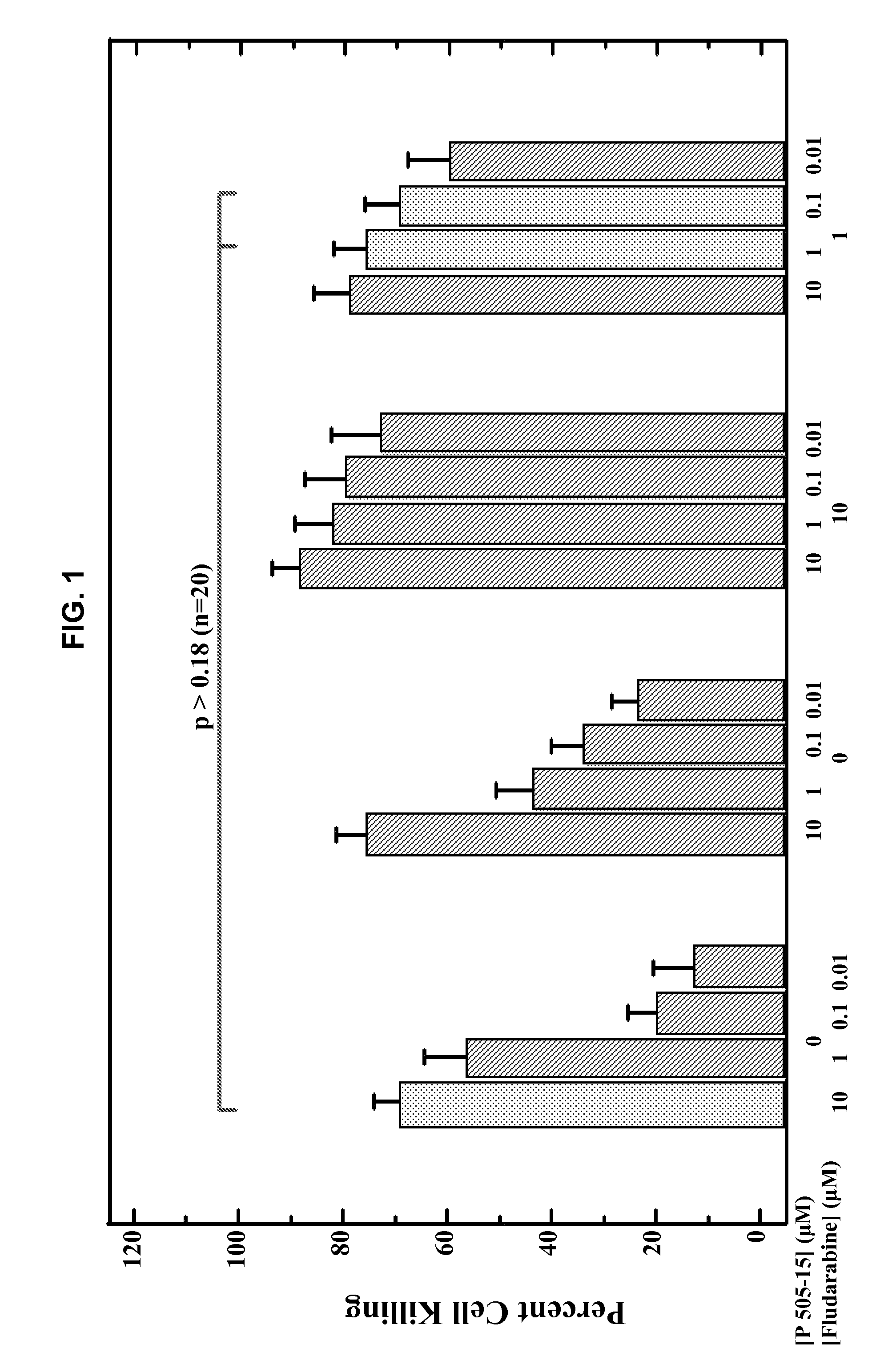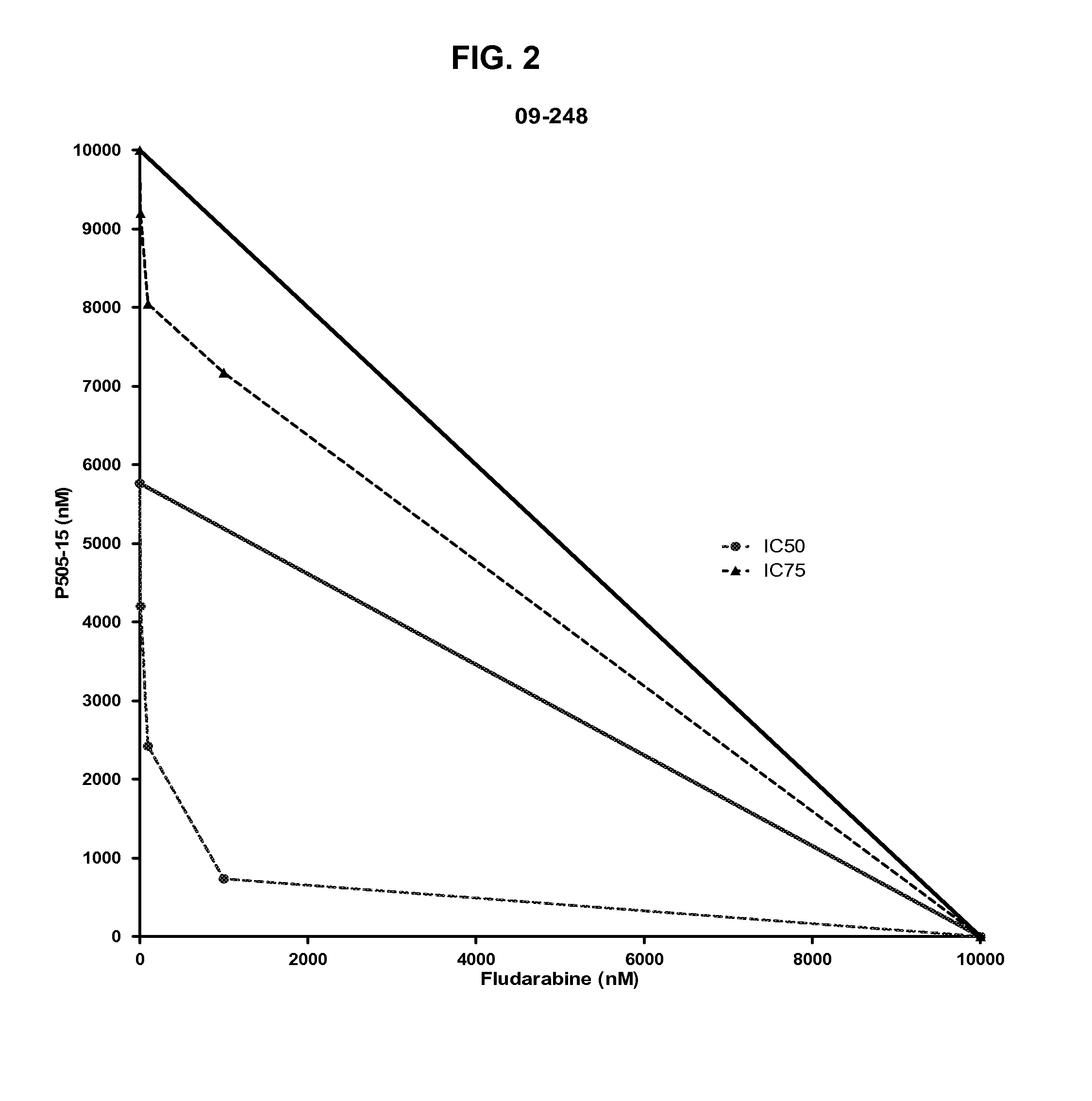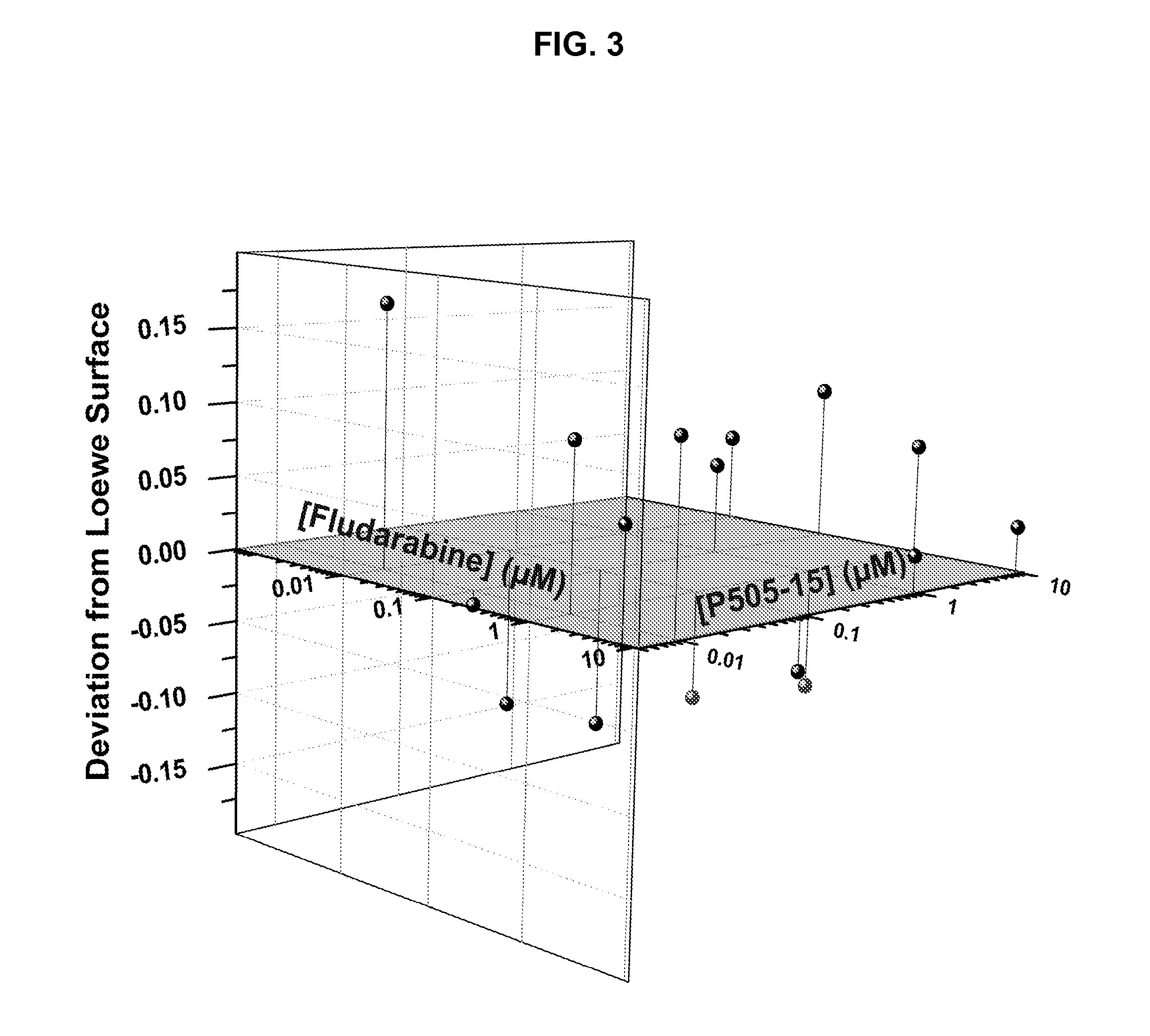Combination therapy of 4-(3-(2h-1,2,3-triazo-2-yl)phenylamino)-2-((1r,2s)-2-aminocyclohexylamino)pyrimidine-5-carboxamide and fludarabine
a technology of pyrimidine and pyrimidine, which is applied in the field of conjugation therapy of 4(3(2h1, 2, 3triazo2yl) phenylamino)2((1r, 2s)2aminocyclohexylamino) pyrimidine5carboxamide and fludarabine, can solve the problems of difficult treatment of cell-proliferative disorders and major causes of death of cell-proliferative disorders, and achiev
- Summary
- Abstract
- Description
- Claims
- Application Information
AI Technical Summary
Benefits of technology
Problems solved by technology
Method used
Image
Examples
example 1
4-(3-(1H-1,2,3-triazol-2-yl)phenylamino)-2-((1R,2S)-2-aminocyclohexylamino)pyrimidine-5-carboxamide and hydrochloride
[0148]
[0149]Step 1: Ethyl-4-chloro-2-methylthio-5-pyrimidine carboxylate 1.1 (1752 g) and ethanol (8600 ml) were charge to the vessel under nitrogen. Triethylamine (790 g) was added to the mixture dropwise. An exotherm of 2° C. was observed during the addition. Triazole aniline 1.2 (1210 g) was charged to the vessel in portions. Initially an endotherm of 3° C. was observed, however after ˜1 h the reaction temperature had raised by 5° C. and a white precipitate had formed. After stirring the reaction for 17 h HPLC analysis indicated 0.54% pyrimidine staring material remaining. Water (26.3 L) was charged to the vessel and the slurry was stirred for 0.5 h. The solids were collected by filtration, washed with water (2×8.8 L) and dried in vacuo at 40° C. for 120 h, yielding 2505 g (93%) of compound 1.3 of purity 97% by HPLC as a light yellow solid. MS found for C16H16N6O2S...
example 2
[0157]In vitro sensitivity of primary CLL samples to Compound 1.
[0158]Data presented include primary cell samples from patients who have relapsed and those who have poor risk features for disease progression.
TABLE 1Compound 1 sensitivityDisease Parameters(IC50 All samples tested (n = 42)15 / 42 (36%) 13 q deletion only (n = 16)8 / 16 (50%)11q deletion (n = 8) 3 / 8 (38%)17p deletion* (n = 7) 3 / 7 (43%)IgVh unmutated (n = 17)4 / 17 (24%)IgVh mutated (n = 14)8 / 14 (57%)*Present in >20% of CLL cells
example 3
Combination of Compound 1 and Fludarabine Decreases CLL Cell Viability in a Human CLL Model
[0159]Fresh primary CLL cells from 42 CLL patients were purified using a Ficoll gradient. Purified cells were then added to wells (5×104 per well) containing 10% serum serum containing media and four serial dilutions of Compound 1 (ranging from 10 nM to 10 μM) with or without different concentrations of fludarabine (also ranging from 10 nM to 10 μM). Three days after adding primary CLL cells to each well, a tetrazolium-based cell viability assay (MTS, 3-(4,5-dimethylthiazol-2-yl)-5-(3-carboxymethoxyphenyl)-2-(4-sulfophenyl)-2H-tetrazolium) was performed to evaluate the effect of Compound 1 on CLL cells. The viability data were normalized to untreated controls and were used to calculate IC50 values. Average results of combination experiments using differing concentrations of fludarabine and Compound 1 (n=18) were analyzed by CombiTool (Dressler et al. Comput. Biomed. Res. 199, 32(2): 145-160). ...
PUM
| Property | Measurement | Unit |
|---|---|---|
| length | aaaaa | aaaaa |
| temperature | aaaaa | aaaaa |
| temperature | aaaaa | aaaaa |
Abstract
Description
Claims
Application Information
 Login to View More
Login to View More - R&D
- Intellectual Property
- Life Sciences
- Materials
- Tech Scout
- Unparalleled Data Quality
- Higher Quality Content
- 60% Fewer Hallucinations
Browse by: Latest US Patents, China's latest patents, Technical Efficacy Thesaurus, Application Domain, Technology Topic, Popular Technical Reports.
© 2025 PatSnap. All rights reserved.Legal|Privacy policy|Modern Slavery Act Transparency Statement|Sitemap|About US| Contact US: help@patsnap.com



